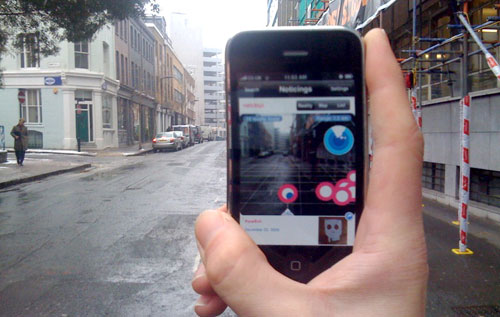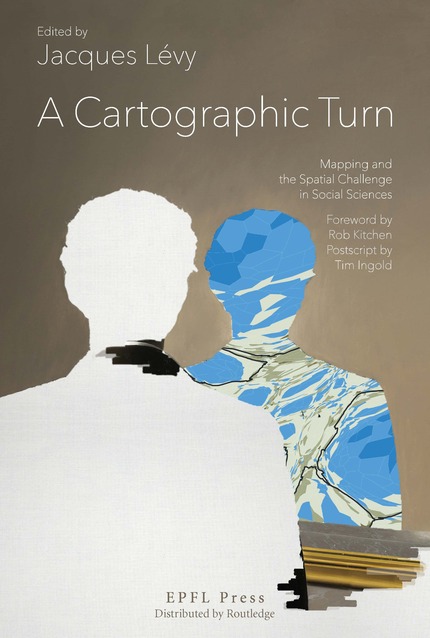
Behind the illusion
In Herzog’s Fitzcarraldo, Klaus Kinski with his eyes buried deep into another world stands on the shore of a river and says:
Everyday life is only an illusion behind which lies the reality of dreams
This is what the Jivaro Indians reportedly believe. But what Kinski’s character sees is his boat climbing over the hill to reach another river. It is loaded with latex, a matter to be transformed into money where the river ends, for the money in turn to be traded for Fitzcarraldo’s dream: an Italian opera master singing in the midst of the Amazonas jungle. He envisions a place for beauty in a world of fierce competition for resources and land.
There is a gap between Fitzcarraldo and the Jivaros, of course, as they don’t share the same dream. But what unites them is a will to inhabit the world not according to what there obviously is but according to what there ought to be. They strive for an existence in other layers of space. Their struggle is rough, though, at the beginning of a century characterized by monospatial logics. Could today’s technology provide an easier answer to their wishes?
Innovation as network articulation and perspective shift
The technology I am referring to is actually a rhizome composed of at least three elements:
- A plurality of mobile devices connected to a worldwide network.
- Their users
- A model of cohabited space, a world wide map materially carried by a system of satellites whose combined signals, considered within the scope of the model, assign a unique position to any device.
The third element is what GPS is all about. Most interestingly, the world wide map allows for a plurality of objects to be situated in the same place. Only locations are non-equivocal: what is to be found in them depends on the selected layer of spatial information. For a long time, these layers could be observed only from a zenithal point of view, i.e., from a perspective exterior to the observing subject. The most recent technological advances consist in bringing them to his own, floor-level perspective. The position of a palm-held device – a camera- and accelerometer-doted mobile phone – is calculated. The selected layer of spatial information is then superposed to the image captured by the camera. It consists of 3D objects. The coined term is augmented reality. Looking through the eye of the beheld, you now dwell in the “layer” you chose. Seamlessly, you’ve conquered your reality of dreams.
A computer application has democratized this empowerment as recently as 2009. Called “Layar”, it has first been deployed on the Android operating system, before being implemented also for the iPhone in 2010. There are currently over 470 layers produced by third parties. An exponential growth of this number is to be expected, considering the relative simplicity of the API.
Beyond Aristotle: from amplifying the obvious to spatial empowerment
Most existing layers are still confined to localization purposes within the one, obvious layer: you are to be guided to shops, fast-food corners, bus stops, commonly acknowledged touristic attractions… So far, we are dealing with an amplification of an existing striated space. Some layers, though, do take serious advantage of the empowerment. One of them is “ARTags”. This layer literally doubles walls. It drapes space in another space, providing a new drawable surface to its subscribers. Like any space, ARTags has a territorial logic. In its case: “first come first served”. But this logic is distinct from the one allowing a building owner to erase an undesired graffiti. Precisely here, collaborative augmented reality (CAR) becomes more than collaborative mapping. It is an open challenge to a territorial logic of exclusion which claims since the times of Aristotle that two bodies cannot occupy the same portion of space at the same time (Physics, Book IV). More importantly than this logic itself, CAR defies powerful spatial actors who made it into a tool of assertion of their social position. A more elaborate example of this is the AR exhibition realized by Sander Veenhof and Mark Skwarek within the walls… of the New York Museum of Modern Art. As the artists put it, “the show is happening in augmented reality, and will therefore not be visible to regular visitors of the MoMA”. The exhibition exists as an AR-layer but occupies floors 1 to 6 and virtual floors 7 and 8 plus garden. It “opened” on October 9th 2010. Here, the artistic legitimacy of a controlled portion of space (the MoMA building), is stolen, and thus defied by an artistic project in augmented reality.
Aesthetics as a political process
But possibilities outgrow the realm of art. A political slogan remains a slogan even if is sprayed on a hyperwall, and what AR can do is more suggestive than graffiti. Couldn’t a hyper-Temple of Solomon finally coexist with the Bait-ul-Muqaddas? Couldn’t the West Bank Barrier be made transparent? With respect to such questions, contemporary technology is both despairing and exalting. Despairing because its solutions are desperately easy to implement, yet would only be effective if they propagate to all spatial layers. Exalting because it allows, for a moment at least, a suspension of our spatial aporias. Dangerous, also, because spaces tend to act on other spaces. Dreams are programs and there are the more efficient when they are formulated with higher precision, the more compelling when they are concretely experienced. The Jivaros manage to transport Fitzcarraldo’s boat over the hill but they send it down the rapids because such is the final will of their God.
The future isn’t the only realm of efficiency of AR and CAR, though. It extends into the past as well and can be seen as an extreme form of an urban palimpsest. An example of this is the layer “Berliner Mauer”, an AR reconstruction of the historic scar of Germany’s capital. For an AR-device owning stroller, it is a highly suggestive approximation of what the Wall must have felt like for thirty years. Other layers give concrete form to less discussed historical facts. Among these, the “Frontera de los Muertos”, a memorial dedicated to the thousands of migrants who have died along the U.S./Mexico border. Erased remains are put back to their place in the landscape in the 3D form of Mexican calaca. In this example, AR becomes an actor of a collective memory which tends to be erased in every-day space.
Extending both into the future and into the past, AR finally offers also a new scale of architecture. There is “Biggar”, another project by Sander Veenhof and Mark Skwarek consisting of over seven billion blocks circling around the earth. For now, this is described as the world’s biggest sculpture. It still seems episodic but it does illustrate AR’s potential of becoming the setting of yet unthought-of manners of defying existing topographies and topologies.
Moving maps and Bodies
CARs’ main vector, Layar, will yet need to escape from its own excluding logics (for now, every layer has to be authentified by the application owners prior to publication). It and its competitors – for now Wikitude and Junaio – will need to walk the thin path between monopolistic territorialization of spatial dreams, and their fragmentation into a foam of incompatible standards. Yet CAR remains the first big step in the evolution of cyberspace since the emergence of social networks like Facebook and Myspace. This time, the evolution has a strong spatial component, in the bodily meaning of the term. More than in any other information system, in effect, bodily movement is required to access its places. Yet it is composed by a plurality of maps, i.e., by a plurality of images constructed according to an explicit symbolic spatial language and based on an analogical relationship to another space. Their uniqueness consists in their 1:1 scale. They are the first maps needing the participation of multitude of users, not only to be written but also to be read. By their use, the global information polis acquires a kinetic dimension without losing its plurality. They compose a world in which many worlds are possible. An everyday life beneath each of whose layers there will always be space for the reality of dreams.
Publication context

This blog entry proceeds from a talk given on Friday, April 15th, in the symposium “Mapping Ethics“, EPFL, Lausanne, Switzerland. The object of my presentation was Collaborative Augmented Reality. The ideas exposed here have been discussed in the workshop “Ethics Despite Aesthetics“, presided by Françoise Schein (École supérieure d’arts et médias de Caen).
The talk has yielded the following paper:
Ourednik, A. (2015). Augmented Reality and the Places of Dreams. In J. Lévy (Éd.), A cartographic turn. Lausanne: EPFL Press & Routledge.
Further reading
BILLINGHURST Mark , KATO Hirokazu, 2002, Collaborative Augmented Reality. Working paper. [Though the term Collaborative Augmented Reality has spontaneously imposed itself to me while preparing my presentation, a subsequent google search revealed that it has been coined as soon as 2002 in this publication, in the context of human-machine interface research. I have thus included the reference here, without my paper being a direct answer to Billinggurst’s and Katos’s paper.]
HERZOG Werner, 1982, Fitzcarraldo, film, Peru, West Germany.
Metaio, OGC, Layar, and Wikitude invite Mobile World Congress attendees to AR Interoperability Demo.